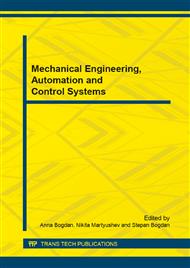p.47
p.53
p.59
p.65
p.70
p.75
p.79
p.85
p.92
Development of Bases and Evaluation Capabilities of the New Tribotechnology for Plain Bearings
Abstract:
The article provides a tribological basis of a new deformation-thermal method to make the surfaces friction materials for plain bearings the improved anti-friction properties (high score resistance, running-in and others) by creating a modified surface layer. The method is based on the use of surface plastic exposure with the subsequent realization of the effect of thermal return of a thin surface layer. A number of most important descriptors of friction ensuring a durability of tribosystems in extreme conditions was considered. Basing of the laws of solid mechanics, principles of material science and regularities of friction and wear, the possibilities of transformation of these values in a favorable direction by using the new method were estimated. The experimental conditions for samples of bearings alloys used in modern reciprocator are given. The results of experimental study of tribodeformational effects for these alloys for a baseline option and with a preliminary modified surface layer are presented. A possibility in principle for the substantial increase of service properties of study group of materials basing on use of the presented method of modification is indicated.
Info:
Periodical:
Pages:
70-74
Citation:
Online since:
April 2015
Authors:
Keywords:
Price:
Сopyright:
© 2015 Trans Tech Publications Ltd. All Rights Reserved
Share:
Citation:


